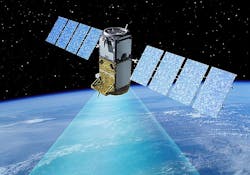DARPA asks industry for ideas on augmenting inertial navigation with non-GPS technologies
ARLINGTON, Va., 8 Sept. 2014. U.S. military researchers are surveying industry for technologies that augment inertial navigation systems (INS) to enable precision long-endurance navigation and precise weapon and platform maneuvers.
Officials of the U.S. Defense Advanced Research Projects Agency (DARPA) in Arlington, Va., issued a request for information Thursday (DARPA-SN-14-62) for the GPS-Free Navigation Technology Development project.
This initiative seeks information on the current state of the art and emerging technology or capabilities for the potential development of GPS-free precision navigation and homing technology, DARPA officials say.
Advanced military aircraft, missiles, and other platforms require precise navigation knowledge to perform long-endurance missions and precise terminal maneuvers. DARPA researchers are looking for small error in location relative to a selected fly-to point or feature.
Related: DARPA takes another look at precise positioning without GPS in upcoming STOIC program
Today's GPS-free precision navigation still suffers from several shortcomings, DARPA Researchers say. These include large mean-squared navigation errors over time; high acquisition, operational, and maintenance cost when compared to GPS; time-consuming and labor-intensive pre-mission analysis and planning; large supporting infrastructure for mission planning; large cost, size, weight, and power (C-SWaP) incompatible with deployment on small military platforms; and large waste heat incompatible with deployment on small platforms.
To overcome these, DARPA officials are trying to develop navigation sensor inputs that involve radar and infrared imaging; active and passive guidance by infrared sensors and radar; and using infrared, radar, and RF communications signals of opportunity for tracking.
Proposed solutions should have navigation and homing precision at least as good as GPS; come in small C-SWaP packages; the ability to operate over denied areas; the ability to hide the location of the mission platform to attack; be applicable to many kinds of aircraft and air-launched munitions; have short pre-launch latency; require little or no human intervention; and keep data throughput to a minimum.
DARPA researchers only are interested in technologies to augment inertial-based navigation and homing systems, not in inertial-only approaches.
Industry ideas should involve sensing modalities and sensors for precise GPS-free homing; the role of automatic target recognition in precise GPS-free homing; cross-modality image and signal processing necessary for navigation accuracy; how to hand one sensing modality off to another; real and virtual 3D digital elevation models that would be necessary; amount of pre-launch navigation and mission planning that would be necessary; supporting tools required; the guidance and control technologies that best could exploit a GPS-free navigation and homing system; and the key technology developments necessary for GPS-free precision navigation.
Related: DARPA pushes forward with navigation sensor fusion initiative to reduce dependence on GPS
DARPA officials will use the suggestions they receive from industry to decided whether or not to pursue a GPS-free precision navigation technology development program.
Companies interested in submitting ideas should email responses no later than 30 Sept. 2014 to [email protected]. Email questions or concerns to [email protected].
More information is online at https://www.fbo.gov/spg/ODA/DARPA/CMO/DARPA-SN-14-62/listing.html.

